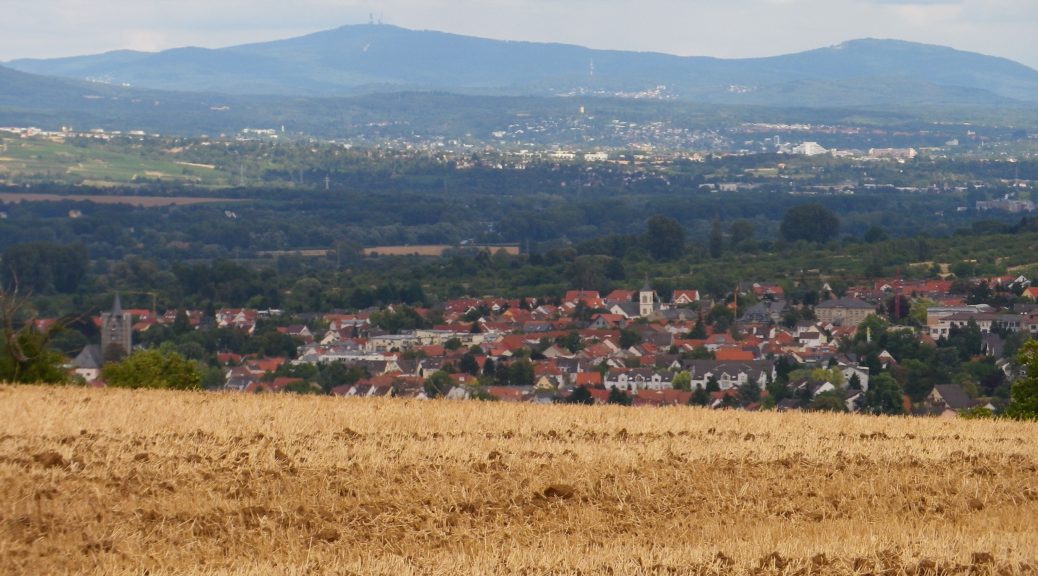Charlemagne brought wine to Ingelheim, and I followed a trail to Ingelheim, wine, and Charlemagne. Thus, in one fell swoop, I managed to satisfy my wine, hiking, and early medieval history passions in this small town on a partly sunny afternoon.
The Carolingian and earlier Merovingian times in Western Europe have always interested me. So when I heard about the wonderful exposition of the remains of one of Charlemagne’s favorite palaces, I had to visit. In addition to a highly focused and informative museum on the palace, the great signboards at exposed walls throughout the town, and outlines in stone of once-extant huge palace structures, help bring the old palace alive, as it was in Charlemagne’s time.
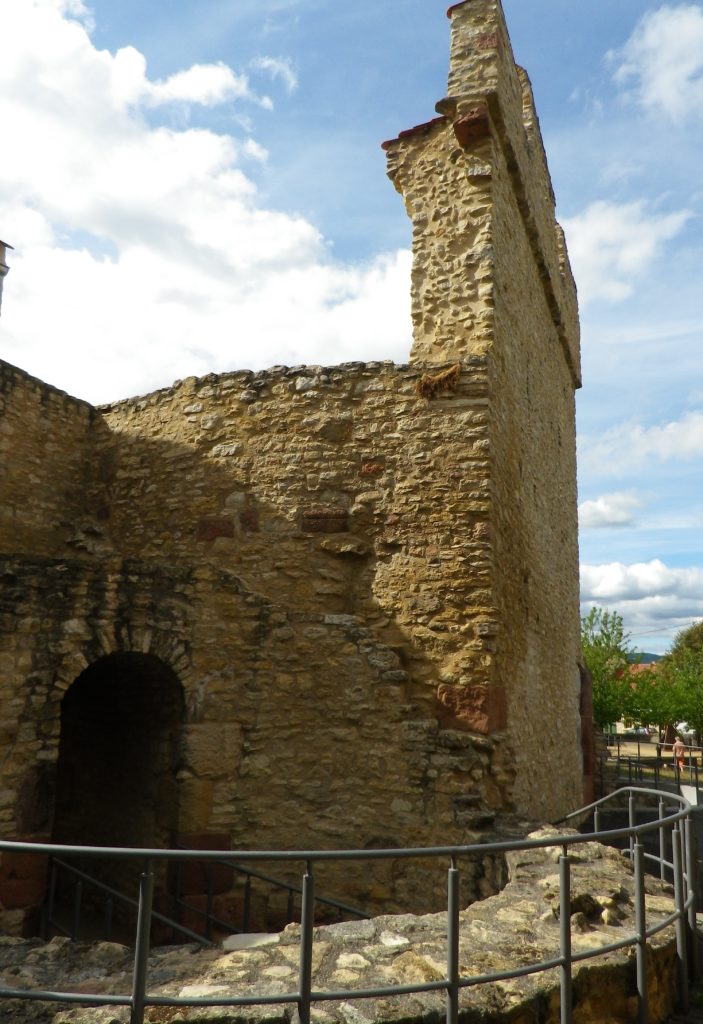
This palace and several of his others in Germany and France were agricultural estates, and Charlemagne had a particular interest in viticulture and viniculture. As legend goes, one fine winter day in his Ingelheim palace, Charlemagne noted that the snow had already melted on one of the slopes viewed from his estate. He directed vines be planted in that spot. And so they were, and have been ever since. (Unfortunately for this story though, he was looking at a site in the Rheingau, across the Rhine, not in the Rheinhessen.) Charlemagne also promulgated a series of directives set down in the Capitularis Villa, which documents how he wanted his estates run. It includes some details on wine production. No wine was to be produced by crushing the grapes with the feet. Wine was not to be kept in skins. His focus on cleanliness undoubtedly helped produce better wines from his estates.
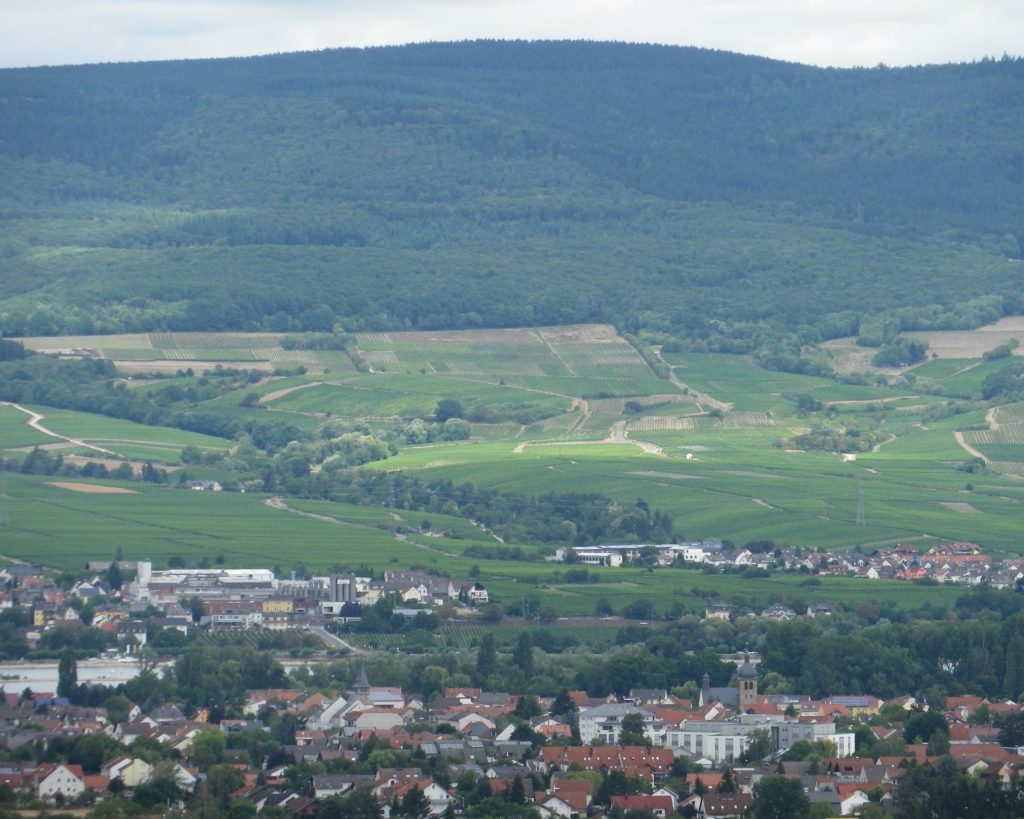
Vines grow extensively in and around Ingelheim, with one of the smallest named vineyards, the Sonnenberg covering half a block in the town. As the ending berg denotes, it lies on a slope. In fact, the town is surrounded on three sides by hills. These hills give the hiking trail its name: the Hiwwel-tour, “Hiwwel” being dialect for “hill”. Just as there are several hills, there a several Hiwwel-tour routes. The one I followed began and ended at the Bismarckturm, a huge tower on a hill above the town dating to the beginning of the 20th century. Driving through vineyards and parking at the foot of the tower, I began the hike.
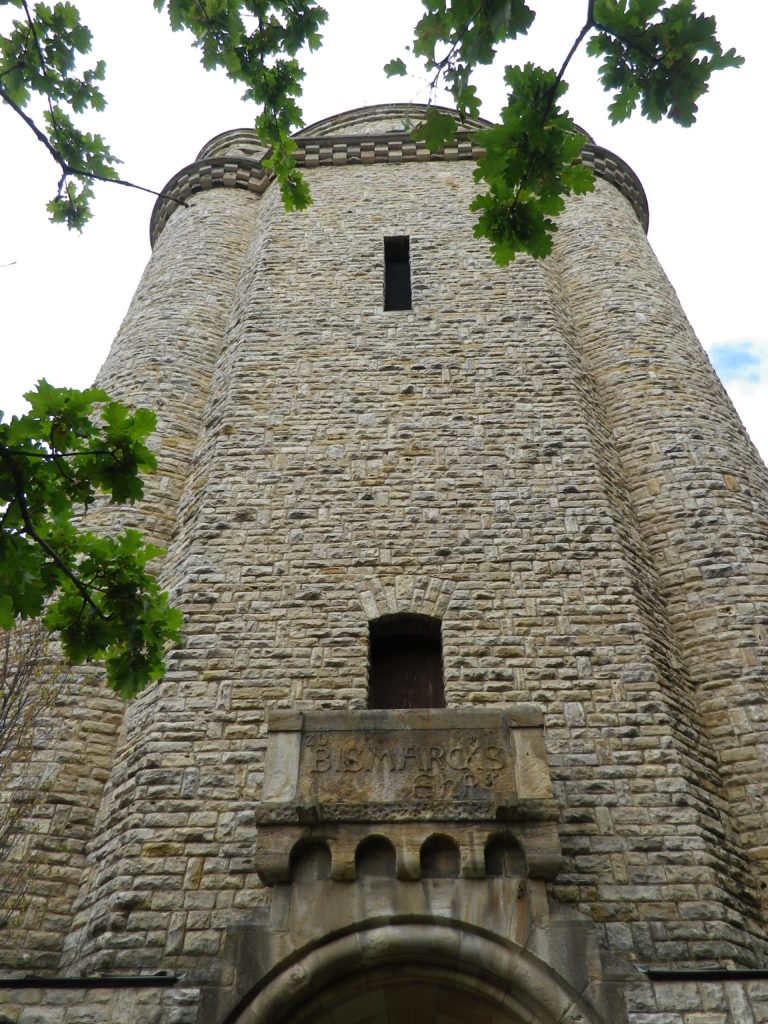
This hiking trail was a delightful surprise. In spite of Ingelheim’s self-designation as the “Red Wine Town”, the wines from the Wine District of Bingen in the Rheinhessen Wine Region are not particularly well-known. Therefore, I illogically concluded, the trail (and wines) would not likely prove interesting. But I was wrong on both counts.
The trail is sub-titled “Wald, Weinberge und Weite”, or Forest, Vineyards and Expanses. The trail followed along the outer edge of the hills fronting the Rhine River Valley. Views certainly were expansive. To the north and east lay Rudesheim, at the start of the world-famous Mittel-Rhein grape growing region. High above the vineyards I could just make out the Deutsches Kaiserreich (German Empire of 1871-1918) Niederwald Memorial, a winged Victory commemorating the unification of the German state. From its highs to its lows, I later saw remains of old fortifications and dug-in infantry positions, relating to the defense of the German Empire during World War I. But this empire fell not from without, but from within, with the German Revolution of 1918-1919.
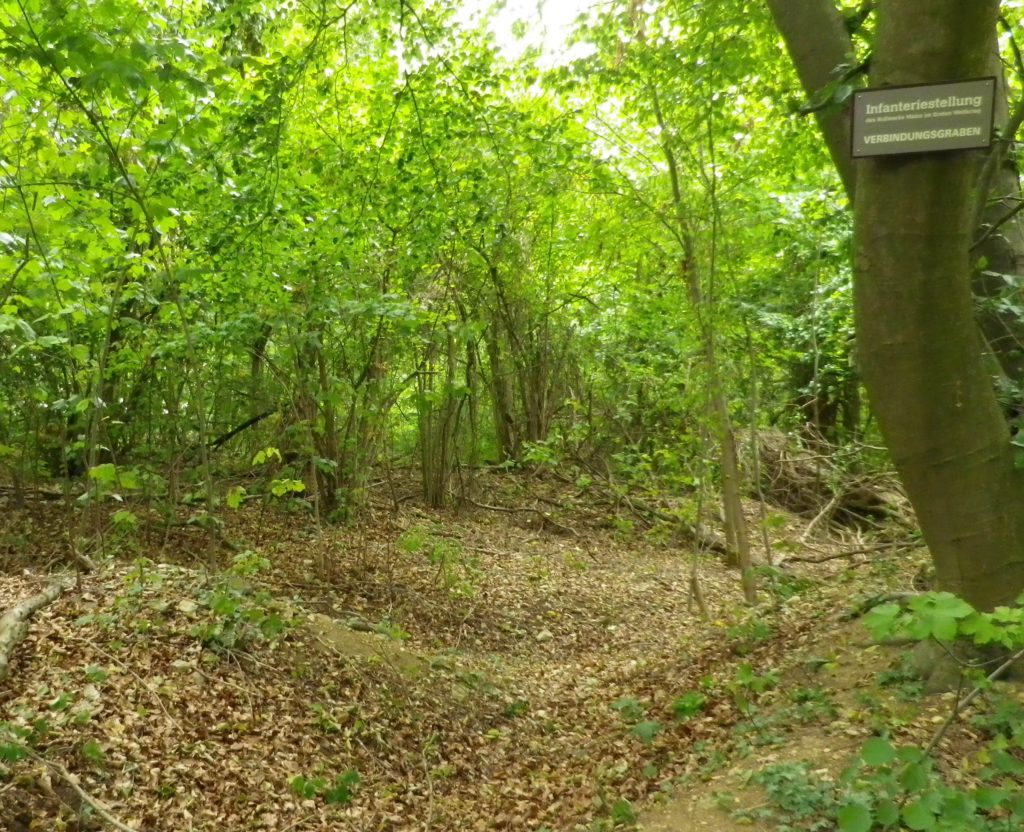
Panoramic views were also to be had to the north across a wide valley, and to the west to wooded hilltops. Charlemagne, the first man designated Holy Roman Emperor, undoubtedly rode along these hills and vales. This area, and most of Western Europe, fell under the Holy Roman Empire which Charlemagne headed. In addition to his interest in agriculture, was his passion for hunting, which he would have indulged here, when the peripatetic emperor was in town. All in all, the views along the trail were impressive.
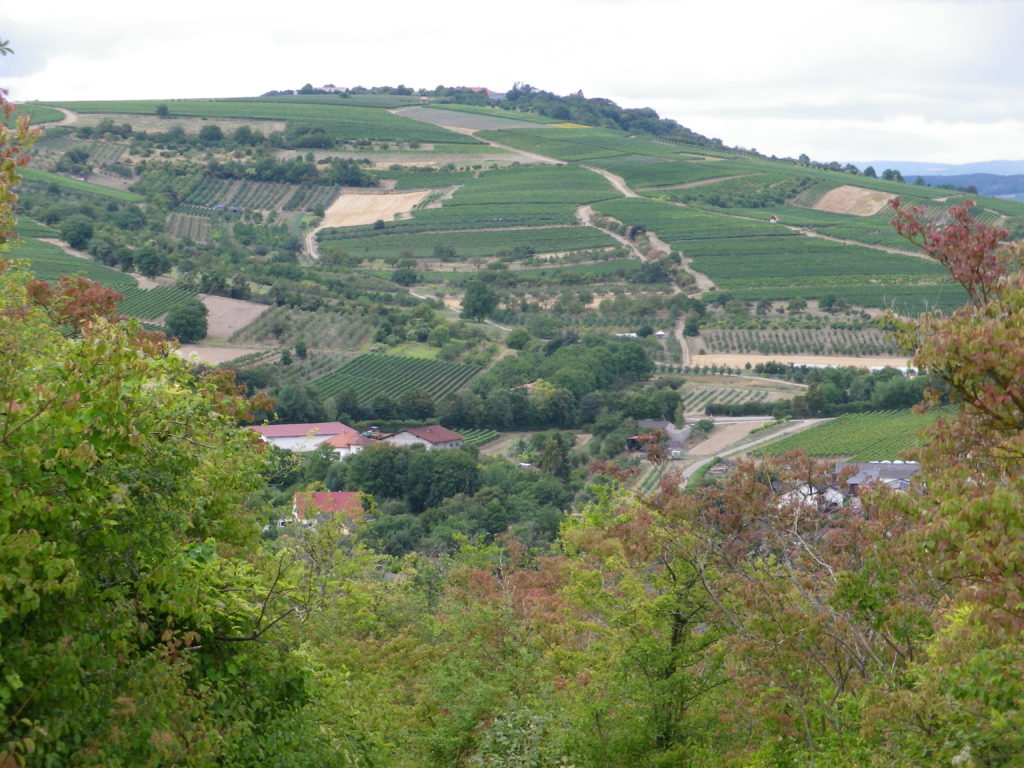
The trail also offered a lot of variety. Different trees, flora, and agricultural products appeared along the way. And there were vineyards! These covered much of the ground between the hill and the town, and were visible in the Riesling-dominated Rheingau Wine Region, across the river valley. The terrain changed from flat to hilly, passing along streams and over dusty fields, with corresponding changes in trail surface.
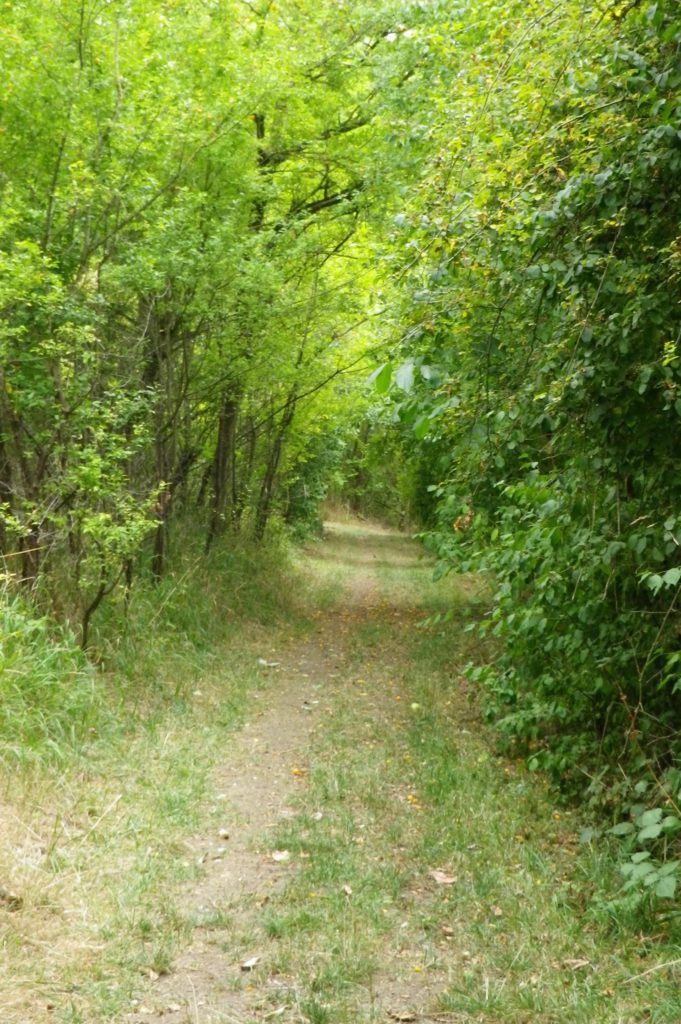
Empires (and emperors) come and go. But the wine empire here has outlasted them all so far. And a hiking trip to Ingelheim can result in a greater appreciation of it all!
